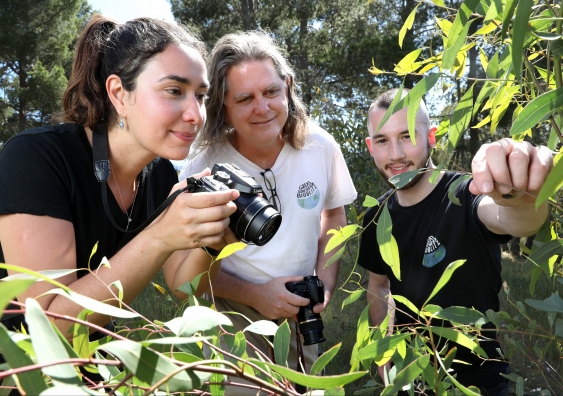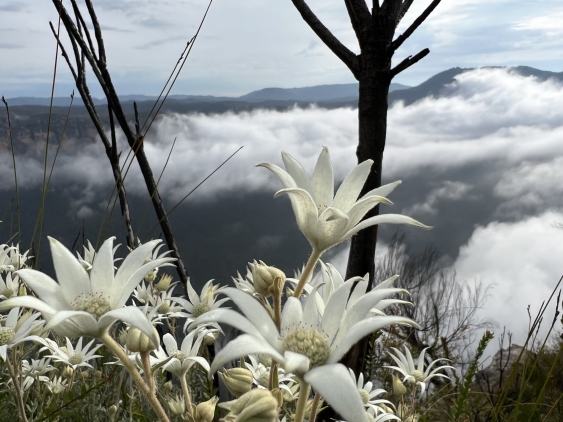Citizen scientists needed to help record impact of fires on biodiversity
UNSW scientists hope the Big Bushfire BioBlitz will build on the 17,500 observations submitted to the Environment Recovery Project.
UNSW scientists hope the Big Bushfire BioBlitz will build on the 17,500 observations submitted to the Environment Recovery Project.

Diane Nazaroff
0424479199
diane.nazaroff@unsw.edu.au
UNSW Sydney scientists are behind a citizen science event that will document the bushfire recovery of plants, animals and fungi across three bushfire affected regions in New South Wales.
The Big Bushfire BioBlitz starting on February 25 is a series of weekend-long events which will generate new evidence on the impacts of large-scale fire on biodiversity.
The BioBlitzes will take place in the Gondwana Rainforests of Washpool National Park, the Blue Mountains World Heritage Area, and Murramarang National Park on the south coast.
Thomas Mesaglio, iNaturalist curator and PhD candidate at the UNSW Evolution & Ecology Research Centre, said that the BioBlitzes will give people the opportunity to contribute meaningful biodiversity data that inform our understanding of how the environment recovers after large scale bushfires, and in turn contribute to research and conservation.
“A ‘bioblitz’ is a focused effort to record as many species as possible in a defined location within a limited period of time,” Mr Mesaglio said.
“Citizen science events such as bioblitzes provide an invaluable opportunity to maximise the amount of data collection, intensely focusing on particular areas, as well allowing people of all skill levels to be involved.
“Participants get to interact with and learn from experts, and also offer their own local expertise and insights to the experts, so it’s a fantastic two-way transfer of knowledge.
“These events are also great for motivating participants to become long-term contributors to citizen science platforms such as iNaturalist.”
Experts – including from one of the partner scientific organisations, the Australian Museum – will lead biodiversity events over the weekends.

Flannel flowers - seen here in the Greater Blue Mountains World Heritage Area - are an example of fire-adapted plants which flower prolifically after a bushfire. Photo: Margaret Sky/iNaturalist, November 2021 (CC-BY-NC)
Casey Kirchhoff, PhD candidate at the UNSW Centre for Ecosystem Science, founded the Environment Recovery Project on the iNaturalist website after the devastating Southern Highlands’ Morton bushfire destroyed her Wingello home in January 2020.
“Citizen scientists have been really motivated since the 2019-2020 bushfires,” Mrs Kirchhoff said.
“We’ve already had over 17,500 observations of bushfire recovery submitted to the Environment Recovery Project.
“We’ve been delayed by COVID-19, but it’s great to finally have the opportunity to engage more directly with some of the bushfire impacted communities through citizen science at the bioblitzes.
“The more observations we can collect, the more we will know about the impact of the fires on our environment.”
While not everyone will be able to make it to an in-person bioblitz, everyone who can access a bushfire-impacted area right across Australia is encouraged to participate.
“The Big Bushfire BioBlitz iNaturalist project will be open to every citizen scientist keen to ‘bioblitz’ their own area, no matter if they’re in Western Australia or Kangaroo Island,” Mrs Kirchhoff said.
The iNaturalist community has more than 88 million biodiversity records and links to Australia’s leading open-access biodiversity data platform, the Atlas of Living Australia, where everybody from scientists and policymakers to the general public can access a wealth of biodiversity information.
The bioblitzes are supported through the Australian government’s Regional Bushfire Recovery Fund and UNSW’s Centre for Ecosystem Science, in partnership with the Atlas of Living Australia, Minderoo’s Fire and Flood Resilience Initiative and the Australian Citizen Science Association.
Register for the Big Bushfire BioBlitz.